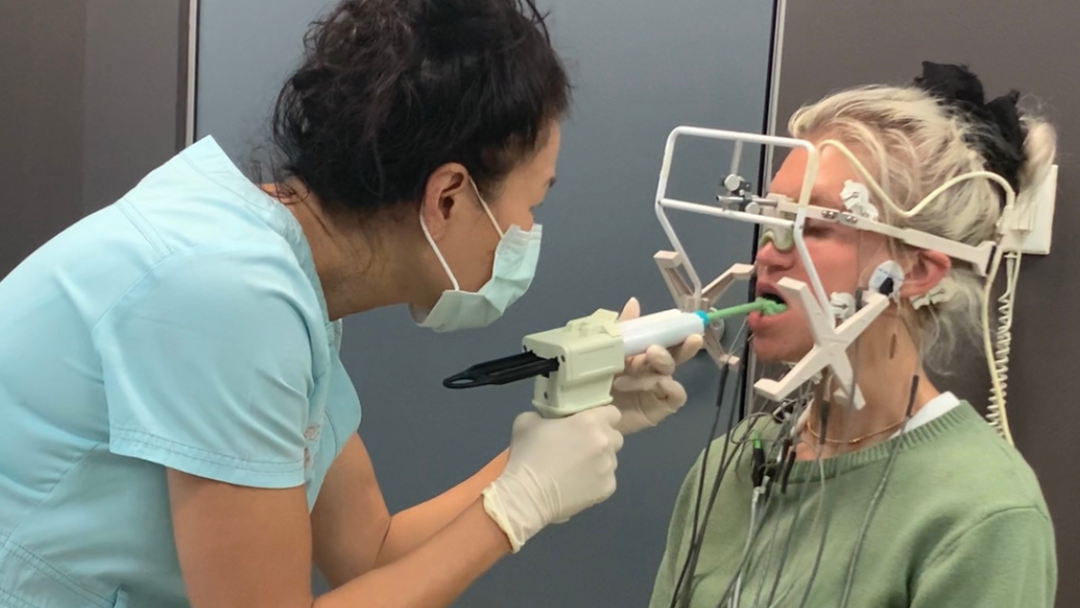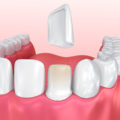Ever wondered about the difference between narrow and wide smiles? In this post, we’re diving into just that. It’s all about understanding the role of dental anatomy in shaping your smile. We’ll explore common dental and orthodontic issues that influence whether your smile is more on the narrow side or strikingly wide.
We’re also covering the latest treatment options and procedures available to address these concerns. This includes a peek at specific dental and orthodontic solutions designed to enhance and transform your smile. Plus, we’ll discuss how orthodontists manage space in your mouth, a crucial factor in perfecting your smile.
By the end of this article, you’ll have a clear idea of how to achieve the smile you desire, ensuring it not only looks great but feels right for you.
Narrow Smile Vs Wide Smile: What Are The Differences?
When we talk about a beautiful smile, it’s often the shape and spread that catch our eye. Smile shapes can vary significantly; a narrow-looking smile typically shows less of your teeth and can give a tight smile look, whereas a wide smile or broader smile reveals more teeth and can often be seen as more engaging or friendly.
People with a broad smile often show their upper teeth more prominently, which can contribute to a youthful or healthy smile. On the other hand, a very narrow smile sometimes called a gummy smile, might expose more gum than teeth, leading to an aged appearance.
It’s not just about looks, though. The type of smile you have can also affect your oral health and the way you speak or eat. Understanding these differences helps in choosing the right dental treatments to enhance your smile, ensuring it not only looks great but also supports your overall well-being.
Moreover, the width of your smile can influence your facial aesthetics. A wide smile can illuminate your face, enhancing facial symmetry and often boosting self-confidence. Conversely, a narrow smile might not showcase your full expressive potential, which can be addressed with corrective procedures.
Recognising the impact of smile width is essential, as it reflects not just personal style but also speaks volumes about your approach to dental care and aesthetics. Embracing the uniqueness of your smile, whether narrow or wide and knowing the options available for change is a step towards embracing your individual beauty and health.
Dental Anatomy and Smile Characteristics
Your smile’s look is greatly influenced by your dental anatomy.
The palate, or roof of your mouth, along with the bones and dental arch shape, play a crucial role in determining whether you have a narrow or wide smile. The upper teeth, especially how they align in the maxillary arch (the upper jaw), significantly affect the breadth of your smile.
The buccal corridor, the space between the teeth and the cheeks, also contributes to the perception of a wide or narrow smile. A larger buccal corridor typically signifies a wider smile. Meanwhile, the upper arch’s width can either stretch the smile across the face or concentrate it in the middle.
Additionally, your facial structure greatly impacts how your smile looks. Certain factors, like the shape of your jaw and the position of your teeth, can either enhance or diminish the wideness of your smile. Understanding these elements is key to appreciating how our unique dental anatomies craft our individual smiles.
The balance and proportion of your smile play a pivotal role in overall facial harmony. An optimally aligned smile complements other facial features, creating a more aesthetically pleasing appearance. On the other hand, misalignments or disproportions in the smile can draw attention away from other facial characteristics.
Orthodontic interventions, therefore, not only aim to correct dental positioning for a better smile but also to enhance overall facial symmetry. This holistic approach to dental care underscores the interconnectedness of oral health and facial aesthetics, emphasizing the importance of comprehensive dental assessments in achieving a harmonious and attractive smile.
Common Dental and Orthodontic Issues
Certain dental and orthodontic issues are more prevalent in either narrow or wide smiles.
For instance, crowded teeth are commonly seen in narrow smiles, often leading to crooked teeth due to the lack of space. In contrast, wide smiles might face issues with spacing or misaligned teeth, where there’s too much room.
Asymmetrical teeth can affect both types of smiles, but they are more noticeable in wider smiles due to the larger display of teeth. Similarly, incorrect tooth alignment doesn’t just impact your smile’s appearance; it can also affect your overall facial aesthetics.
Other concerns, like dental issues stemming from orthodontic issues, can contribute to an uneven smile. Conditions such as bone loss or variations in bone structure can lead to significant changes in both narrow and wide smiles, impacting not just aesthetics but also function. Understanding these common issues helps in identifying the right treatments to achieve a balanced, healthy smile.
Additionally, these issues can influence oral health, such as the risk of tooth decay and gum disease. In narrow smiles, overcrowding can make cleaning teeth more challenging, leading to plaque buildup. Wide smiles with gaps may cause food particles to get trapped, increasing the risk of dental problems.
This underscores the need for a comprehensive approach to dental care that addresses both aesthetic and health aspects. By focusing on the underlying causes and not just the symptoms, dental professionals can provide solutions that improve the overall quality of life, enhancing both the function and appearance of the smile.
Treatment Options and Procedures
There are various treatments to modify narrow or wide smiles, each with specific goals and implications.
Orthodontic treatment is often used for widening narrow smiles and addressing issues like crowding through braces or aligners. Conversely, to reduce a wide smile, strategic tooth removal or repositioning might be considered.
Dental treatment options range from simple cosmetic adjustments to more complex surgical procedures. Cosmetic treatments like veneers can change the appearance of the teeth, making a narrow smile appear wider or vice versa. For more significant changes, surgical procedures might be necessary, although these are more invasive.
Non-invasive treatments, like dental bonding, are also options, focusing on altering the teeth’s appearance without extensive dental work. The type of treatment chosen depends on individual needs, forming part of a comprehensive treatment plan.
When considering treatment, it’s important to look at effective treatment methods and the history of successful treatments. Each option comes with its own set of benefits and considerations, making it crucial to consult with a dental professional to determine the best approach for your specific smile goals.
Specific Dental and Orthodontic Solutions
Tailoring a smile, whether narrowing or widening, involves specific dental and orthodontic solutions.
Traditional metal braces are a popular choice for straightening and aligning teeth, crucial for adjusting both narrow and wide smiles. Removable aligners offer a less visible alternative, effectively managing tooth position and spacing.
For those with a narrow smile, palatal expanders can widen the upper jaw, making the smile broader. Dental veneers, particularly useful for cosmetic enhancements, alter the shape and size of teeth in both narrow and wide smiles.
In cases requiring more significant structural changes, orthognathic surgery might be recommended. This surgical approach can correct jaw misalignments and is often combined with other orthodontic appliances.
An implant-supported device can also play a role, especially in restorative procedures. The material and type of braces or devices selected depend on individual cases and desired outcomes. Each of these solutions is tailored to meet specific needs, ensuring an effective approach to achieving a balanced and aesthetically pleasing smile.
These treatments are not just about improving the visual aspects of a smile. They also aim to enhance oral functionality, ensuring a harmonious bite and improved chewing efficiency. This holistic approach underlines the importance of considering both aesthetics and functionality in dental and orthodontic care.
In addition, advancements in dental technology have made these treatments more comfortable and efficient, reducing treatment times and improving patient experiences. Ultimately, whether expanding or narrowing a smile, the goal is to create a harmonious, functional, and confident smile that enhances the individual’s overall quality of life.
Detailed Analysis of Treatment Techniques
Adjusting the breadth of a smile involves intricate techniques. Let’s delve into the specifics.
Teeth alignment is fundamental in modifying the smile’s breadth. For narrow smiles, bringing teeth into alignment can be achieved through expansion techniques. Palatal expanders, for instance, apply gentle pressure on the upper jaw, encouraging it to widen. This not only makes teeth visible more evenly across the smile but also improves overall jaw alignment.
In cases where a wide smile is due to excessive spacing, techniques like composite bonding technique or braces can help. These methods close gaps and align teeth more compactly, creating a more proportionate smile. For significant misalignments, oral surgery may be required, particularly for correcting jaw positions.
One potential concern with expansion in adults is eventual tooth loss, as the process can stress the supporting structures of the teeth. However, with careful planning and execution, this risk can be minimized. Conversely, reducing a wide smile might involve tooth extraction, especially when overcrowding is a concern. This creates space and allows for better alignment.
Another aspect to consider is the support provided to the cheeks and lips. A very narrow smile can leave the cheeks unsupported, while a very wide smile may lead to thinning of lips as they stretch to cover the teeth. Adjusting the smile’s breadth can help in providing a more balanced facial aesthetic.
It’s important to note that these techniques should aim to preserve as many natural teeth as possible. While cosmetic procedures can drastically alter the appearance of a smile, the goal is always to maintain or enhance oral health.
For patients undergoing these treatments, the journey doesn’t just stop at achieving the desired aesthetic. Maintaining the results is key. This includes regular dental check-ups, proper oral hygiene, and, in some cases, wearing retainers to keep the teeth in their new position.
Space Management in Orthodontics
In orthodontics, managing space effectively is key to shaping an ideal smile. Whether it’s expanding a narrow smile or reducing the width of an overly wide one, different techniques are employed.
For those with narrow arches, the focus is on creating extra space. This is often achieved through devices like palatal expanders, which gently apply pressure to the sides of the upper jaw. This gradual expansion allows for better alignment of narrow teeth and can even correct arch development issues. Such treatment is most effective during a patient’s growth period, as the bones are more adaptable to change.
Conversely, managing space in broader smiles involves reducing excess width. This might include strategic tooth extraction to create a more proportional smile. Orthodontists may also use braces or aligners to shift teeth into a more ideal position, effectively reducing the broader arch.
It’s important to note that space management in orthodontics isn’t just about achieving different types of smiles; it’s also about ensuring long-term oral health. Properly aligned teeth are easier to clean and maintain, reducing the risk of dental problems in the future.
Moreover, space management must be carefully planned, considering the individual’s facial structure and overall dental health. This ensures that the final result is not only aesthetically pleasing but also functionally sound.
In some cases, managing space might also involve addressing arches during tooth growth. Early intervention can help guide the development of the jaw and teeth, preventing more severe issues later on.
Overall, space management in orthodontics is a complex but essential aspect of achieving a balanced, healthy, and ideal smile. Whether expanding narrow arches or reducing a wider arch, the techniques employed are tailored to each individual’s unique dental structure, ensuring the best possible outcome.
Start Your Journey to a Perfect Smile: Schedule Your Initial Consultation at Smile Design Studio
Ready to achieve your perfect smile? It all begins with an initial consultation at Smile Design Studio.
During this first meeting, we’ll conduct a detailed assessment of your dental health and smile aesthetics. This isn’t just a routine check-up; it’s a comprehensive evaluation tailored to your unique needs and smile goals.
Our expert team will discuss your concerns, aspirations, and options, ensuring you have all the information you need to make informed decisions about your dental health. We also provide a personalised cost estimate, giving you a clear understanding of the investment involved in transforming your smile.
Taking the first step towards your dream smile is easy. Just give us a ring at (08) 9468 3322 to book your consultation. Our friendly staff at Smile Design Studio are excited to guide you on this journey, helping you to smile with confidence and joy. This is more than just a dental appointment; it’s the start of a new chapter in your life where your smile shines brightest.
Frequently Asked Questions
What’s the difference between a narrow and a wide smile?
A narrow smile shows less of your teeth and gums, usually because of the shape of your jaw or teeth positioning. A wide smile, on the other hand, reveals more of your teeth and can sometimes show more gum.
Can I change my narrow smile to a wider one?
Absolutely! With treatments like braces, expanders, or veneers, you can modify the width of your smile. The best approach depends on your specific dental structure and goals.
Are treatments for adjusting smile width painful?
While treatments like braces or expanders might cause some discomfort initially, they are generally not painful. Most patients get used to the feeling quite quickly.
How long does it take to widen a narrow smile?
It varies depending on the treatment plan. Braces might take a couple of years, while veneers can show results much faster. Your dentist will give you a more specific timeline during your consultation.
Will insurance cover these treatments?
This depends on your insurance plan. Some plans cover orthodontic treatments, while others might not. It’s best to check with your insurance provider.
How do I maintain my new smile after treatment?
Regular dental check-ups, good oral hygiene, and, in some cases, wearing a retainer can help maintain your new smile. Your dentist will provide specific aftercare instructions.
Is there an age limit for smile-widening treatments?
There’s no strict age limit, but some treatments are more effective during childhood or adolescence when the jaw is still growing. However, adults can still see great results with the right treatment.
What are the risks of these treatments?
As with any dental procedure, there can be risks like tooth sensitivity or, in rare cases, tooth or gum damage. Your dentist will discuss these with you before starting any treatment.
Can I see what my smile will look like after treatment?
Yes, many dentists can provide digital simulations to give you an idea of the expected results.
How do I start my smile transformation journey?
Reach out to Smile Design Studio today at (08) 9468 3322 for an initial consultation. We’ll assess your smile, discuss your goals, and outline the best treatment plan for you.









